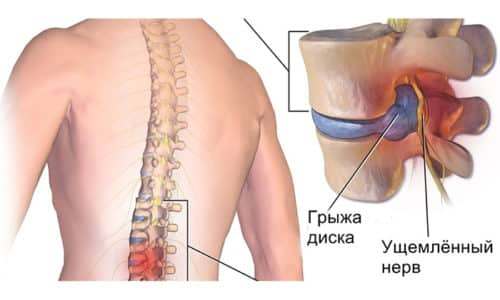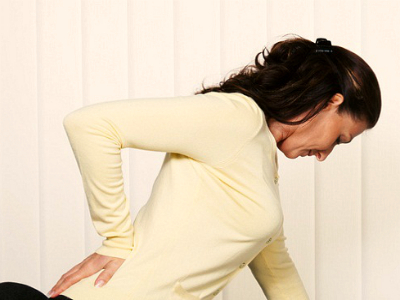A strangulated hernia is an acute condition that requires immediate medical care. While trapped in the hernial SAC part of bodies are compressed at the gate, which leads to circulatory problems and the development of necrosis.
Reasons
To provoke the infringement of the defect can a variety of factors. First and foremost it depends on where the localized education vary: hernia, the white line of the abdomen, inguinal etc.
The main causes of infringement:
- 1Abrupt contraction of the abdominal muscles. Can be when lifting weights, when starting the snatch during running and other sporting activities.
- 2Increased intra-abdominal pressure. Found by prolonged and severe cough.
- 3Attempts with constipation, spasmodic contraction of the muscles of the abdomen in case of diarrhea. The inability of free urination in BPH and other diseases of the genitourinary system.
To increase the likelihood of infringement of a hernia can trigger factors such as heavy labor, rapid weight loss, abdominal trauma. The complication often occurs in the elderly.

Symptoms
The hernia incarceration occurs suddenly. In connection with sharp violation of blood circulation and deterioration of nutrients within a few hours develops necrosis.
The main signs of complications:
- 1Person feels sudden intense pain in the area of pathological protrusion, which extends to nearby tissues. Discomfort persists after taking the horizontal position and complete relaxation of the patient, poorly cropped analgesics. Depending on the localization of the defect the pain may radiate to the thigh, groin, on the entire surface of the abdomen.
- 2Education cannot be set independently, it is not elastic, and tense.
- 3Sometimes after a few hours the pain gradually abates due to death of nerve endings. This indicates a deterioration of the patient.
- 4tissue Necrosis leads to the development of intestinal obstruction, the main symptoms of which – repeated vomiting, with the smell of feces.
- 5When you break the protrusion of the hernial contents flow into the abdominal cavity. Developed peritonitis and bleeding.
- 6the Rapid deterioration of the patient. There are signs of General intoxication – increased body temperature, weakness, sweating. Falling blood pressure, frequent pulse and heart rate.
- 7the Absence of cough shock. If zaselilas hernia, during cough the total voltage of the internal organs is not felt on palpation of protrusion.

Fecal infringement is developing much more slowly, have lower pain intensity.
Diagnosis
When long-standing defect formation to set the compression of the hernial orifice is easy, especially if this was preceded by heavy lifting and other activities involving physical stress.
During the inspection of the visualized asymmetry of the abdomen, not auscultated peristalsis of the intestine, found the positive symptoms of bowel obstruction (Val, splashing, etc.).
If the hernia has not previously been diagnosed, you need to conduct a full examination of the patient to differentiate a complication of other pathologies: coprostasis, about the infringement, etc. this should make plain radiography and ultrasound examination of abdominal cavity.

The compression of an inguinal and femoral hernias should be distinguished from hydrocele, inguinal lymphadenitis, spermatocele and orhoepididimit.
Classification
Classification of the infringement is based on the localization of the defect, features of flow of disease based on organs, the contents of the bag, the degree of compression and other parameters.
Hard diagnosed Richter’s, or the wall, pinching. This is because in a narrow ring gets only a small part of the wall of the intestinal loop.
About the infringement of develops as a complication of inflammatory processes in the abdominal cavity.
Primary and secondary infringement
Initially, the hernia may be impaired immediately after the formation of the defect, and penetration of internal organs. This is the most dangerous variant of the disease, because the patient does not have wariness. In a result, patients seek treatment only after developing severe complications.

Secondary infringement occurs in the background of a long history of hernia. Has a more favorable course, because timely surgery gives you the opportunity to avoid unwanted consequences.
Anatomical location
Depending on localization of pathological process distinguish the following types of hernias:
- 1Internal. Characterized by infiltration of the internal organs in the thorax, causing diaphragmatic muscle are clamped. This may affect the stomach, lower esophagus and lesser omentum, develops hernia reflux esophagitis.
- 2Outer. The formation of the defect and the yield of organs occur outside of the abdominal wall. Can be direct, oblique and ventral hernia.
The body, restrained in gruzevich gate
Often falls in the hernial SAC authorities:
- loops of the small intestine;
- oil seal,
- colon;
- cecum;
- bladder.
Rarely in the pathological process involved the ovaries, uterus, seminal canal, ligament of Cooper, the stomach, etc.

The nature of the infringement
There are the following types of infringement, depending on their nature:
- 1Retrograde. Develops when the hernial SAC at the same time get 2 loops of bowel, with the most affected third hinge that connects them is located in the abdominal cavity. Is heavier than a simple denial, is characterized by a high risk of peritonitis, especially if the doctor has not conducted a full audit of all the bowel loops.
- 2the Parietal. There is a degradation of the intestinal wall, not the lumen. The condition can lead to the occurrence of the necrosis, since to diagnose pathology impossible. Most commonly affected are the small intestine, may damage the stomach and colon. The wall compression is typical for hernias of small size having a narrow gate.
- 3Antegrade. In the hernial SAC is only one loop of intestine or a small portion of any organ.
The degree of compression of the prolapsed organ
Compression of the lumen of a hollow organ can be full and partial. Full infringement develops when the overlap of the lumen of the organ. Incomplete or parietal impairment occurs in the case of compression of a small section of the bowel wall.
In addition, there may be no infringement of a hollow organ. It happens when hitting the bag of the Appendix or diverticulum of Mekele.
Strangulated femoral hernia
Strangulated femoral hernia is characterized by a sharp appearance. Can lead to the development of peritonitis and other complications that require emergency measures.
A pinched spinal hernia
Herniated discs can occur in any division of the vertebral column: cervical, thoracic, lumbar. Most often, the pathology is formed in the lower segments. This is due to the increased load on the lumbar region.

When hernia incarceration developed a sharp pain at the site of the pathological focus. While squeezing the spinal nerves is disturbed innervation and the loss of sensitivity of the skin. The most frequent complication of a pinched sciatic nerve, which leads to a sharp deterioration of health of the patient.
Treatment
Emergency care is conducting an emergency operation. The sooner surgery is done, the more chances the patient has for a favorable outcome.
Depending on the characteristics of the course of disease can be shown holding infusion and antibacterial therapy, especially if a strangulated hernia is accompanied by the development of the hernia SAC cellulitis or peritonitis.
Strictly prohibited
When hernia incarceration in no case should one try to straighten it back out, using physical force. The inflamed area of the intestine is extremely sensitive, with the result that there is a high probability of its rupture with subsequent development of peritonitis.

In no case should one try to cope with the problem independently, using the compresses and other traditional methods. This could further worsen the condition of the patient.
Even if there was an independent reduction of the protrusion during the transport the patient to the hospital, it needs to be under medical observation for several days.
This is because in a limited area of the colon could occur irreversible changes that occur over time.
Surgery
Depending on the degree of infringement of a hernia, the development of necrosis, peritonitis and other complications, the doctor will determine the surgical method.

With timely treatment for medical help is laparoscopy. The access to the pathological focus by means of a special apparatus, which is introduced into the abdominal cavity through several punctures. The image is displayed on the screen, which gives the opportunity to control the process.
The doctor is doing a hernia repair, free flattened bodies and examines their viability, studying the rate of recovery of normal color after release of the ring, resuming the tone, the appearance of pulsation of blood vessels. In case of detection nekrotizirovannah sites holds their removal.
The next step is closure of the defect through which the hernia has gone beyond the abdomen. The doctor selects the required method plastics – stretch (use of patient’s own tissues) and tension-free (use synthetic materials).

The main advantages of this method of surgical intervention are rapid recovery period and the lack of stitches.
With the development of complications is shown holding a vertical midline incision. This is because a doctor must conduct a full inspection of all abdominal organs, especially when retrograde infringement of hernia, when the most affected stage of the colon located in the abdominal cavity.
In the event of necrosis, the affected area is removed with the subsequent superimposition of the anastomosis (connection of 2 phase).
Forecast
With timely treatment for medical help the prognosis is favorable. A large role is played by the self-healing of the body, because the postoperative period, each person is different.
With the development of complications, especially in elderly patients, mortality can reach 10%.
Prevention
To prevent the development of hernias, a person must lead a healthy lifestyle. Upon detection of a hernia it is necessary to minimize all possible factors, capable to provoke its infringement.
Prevention of compression of the defect consists in the wearing of the brace. An important role is played by physiotherapy. Specially chosen exercises can strengthen weakened muscles and to minimize the likelihood of complications.
If possible, you should avoid physical strain and lifting weights. Need to adjust diet to prevent the development of chronic constipation.
Upon detection of hernia is required to make scheduled hernioplastica to close the defect.




Hello ,How 2 take site traffic 2 my {site website blog weblog site blog? thank you
This is most helpful post I have found, when most other bloggers writing about this won’t deviate from the standard dogma. You have a way with words, and I will follow you as I enjoy your writing.
Hey this post certainly made me think! Thank You-I wouldn’t have thought of things from your p.o.v otherwise.